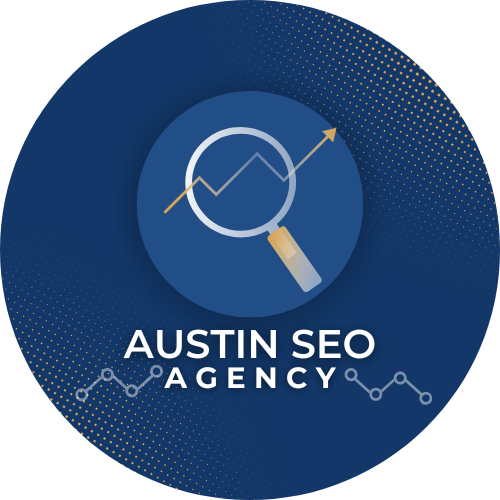Content Marketing Agency – Austin, TX
The Future of Content Marketing: Trends Agencies Should Watch
As digital landscapes evolve, content marketing agencies must stay ahead of emerging trends to remain competitive. In 2025, expect significant shifts in how brands create, distribute, and optimize content. From AI-generated content to interactive storytelling and the growing influence of voice search, these trends will reshape the way businesses engage their audiences.
Let’s dive into the top content marketing trends agencies should prepare for in 2025.
AI-Generated Content: Efficiency Meets Creativity
Artificial Intelligence (AI) is revolutionizing content creation, enabling brands to produce high-quality, scalable content faster than ever. AI-powered tools can generate:
• SEO-optimized blog posts based on trending keywords.
• Personalized email campaigns tailored to user behavior.
• Social media captions and ad copy for various platforms.
While AI improves efficiency, human oversight is crucial to maintain authenticity, emotional depth, and brand voice. Agencies that blend AI’s speed with human creativity will have a competitive edge.
Example: An Austin SEO Agency can leverage AI-driven tools to generate keyword-rich blog content while refining the final output with human insights.
Pro Tip: Use AI for data-driven content suggestions but rely on human creativity for storytelling and brand consistency.
Interactive Storytelling: Engaging Audiences in New Ways
Static content is becoming less effective as audiences crave immersive experiences. Interactive storytelling is the future, including:
• Shoppable Content: Blogs and videos that let users purchase products directly.
• Quizzes & Polls: Engaging tools that drive personalization and lead generation.
• Augmented Reality (AR) & Virtual Reality (VR): Brands creating 360-degree experiences to showcase products and services.
Example: A Social Media Marketing Agencie can design interactive Instagram Stories that let users vote on products, boosting engagement and data collection.
Pro Tip: Implement interactive elements in blogs, emails, and social media campaigns to enhance user experience and drive conversions.
Voice Search Optimization: Adapting to the Rise of Conversational Queries
With the continued rise of smart assistants (Alexa, Google Assistant, Siri), voice search is reshaping content strategy. Businesses must adapt by:
• Optimizing for Natural Language: Writing in a conversational tone to match voice search queries.
• Focusing on Local SEO: Many voice searches have local intent (e.g., “best marketing agency near me”).
• Creating FAQ-Style Content: Structured content that answers specific questions concisely.
Example: An Austin SEO Agency can create voice-optimized content by targeting long-tail conversational keywords.
Pro Tip: Use schema markup to help search engines understand your content and improve voice search visibility.
Final Thoughts: Preparing for the Future of Content Marketing
In 2025, successful content marketing strategies will require a blend of AI efficiency, interactive storytelling, and voice search optimization. Agencies that embrace these trends will enhance brand engagement, SEO performance, and conversion rates.
CALL NOW (737) 379-1515
Content Marketing vs. Paid Advertising: Which Delivers Better Long-Term ROI?
When businesses invest in digital marketing, they often face a key decision: content marketing or paid advertising? While both strategies have their strengths, their long-term return on investment (ROI) varies significantly.
This article will compare organic content marketing with paid advertising, helping businesses determine the best approach for sustained growth.
Content Marketing: The Power of Organic Growth
Content marketing focuses on creating valuable, long-lasting content that attracts, educates, and converts audiences over time.
• Higher Long-Term ROI – Unlike paid ads, content continues to drive traffic long after it’s published.
• SEO Benefits – Quality content improves search rankings, increasing organic visibility.
• Brand Authority & Trust – Businesses that consistently produce helpful content build credibility.
Example: A Web Design Agencie can create blog content on UX best practices, positioning itself as an industry expert while driving consistent traffic over time.
Pro Tip: Repurpose blog content into emails, social media posts, and lead magnets to maximize its impact across multiple channels.
Paid Advertising: Immediate Results, Higher Costs
Paid ads provide instant visibility, making them ideal for short-term campaigns, promotions, and lead generation.
• Fast Lead Generation – Businesses can drive targeted traffic immediately with PPC and social media ads.
• Precise Targeting – Advanced ad platforms allow hyper-focused audience segmentation.
• Scalability – Businesses can quickly increase or decrease ad spend based on performance.
Example: An Email Marketing Agencie running a Facebook ad campaign can instantly grow its subscriber list by offering a free guide in exchange for sign-ups.
Pro Tip: Combine paid ads with retargeting and email automation to nurture leads and increase conversions.
Which Strategy Delivers Better Long-Term ROI?
| Factor | Content Marketing | Paid Advertising |
| Cost Over Time | Lower long-term cost (content keeps driving traffic) | Requires continuous ad spend to maintain visibility |
| Traffic Growth | Grows organically over time | Stops when ad budget runs out |
| Trust & Credibility | Builds brand authority and audience trust | Less trust compared to organic content |
| Speed of Results | Slower (takes months to see impact) | Immediate (traffic and leads right away) |
| Sustainability | Long-term strategy with evergreen benefits | Short-term, needs constant funding |
• Best for Long-Term ROI: Content marketing
• Best for Immediate ROI: Paid advertising
Winning Strategy: Use both approaches together—start with paid ads for immediate traffic and invest in content marketing for sustainable growth.
SEO-Driven Content Strategies: How Agencies Optimize for Search Engines
In today’s competitive digital landscape, content marketing agencies must go beyond simply creating engaging content—they need to ensure it ranks on search engines. A well-crafted SEO-driven content strategy helps businesses improve visibility, attract organic traffic, and convert visitors into customers.
Let’s break down how agencies optimize content using keyword research, backlinks, and on-page SEO for maximum search engine impact.
Keyword Research: Targeting the Right Audience
Keyword research is the foundation of any SEO-driven content strategy. Agencies use advanced tools to identify high-value keywords that align with search intent and business goals.
• Primary Keywords – Core terms that define the content’s main topic.
• Long-Tail Keywords – More specific phrases that capture niche audiences and drive conversions.
• Search Intent Optimization – Aligning content with informational, navigational, or transactional queries.
Example: A Web Design Agency optimizing for “best UX design trends 2025” targets industry professionals looking for insights.
Pro Tip: Agencies use tools like Google Keyword Planner, Ahrefs, and SEMrush to find low-competition, high-impact keywords.
On-Page SEO: Structuring Content for Maximum Impact
To rank well, content must be search engine-friendly while maintaining readability and user engagement.
• Optimized Headings & Subheadings (H1, H2, H3) – Helps search engines understand content structure.
• Meta Titles & Descriptions – Craft compelling SEO-friendly snippets that improve CTR (click-through rate).
• Internal Linking – Connecting pages to enhance site navigation and distribute SEO authority.
• Image Optimization – Using alt text, compressed images, and descriptive filenames for better rankings.
Example: An Email Marketing Agency writing about “email automation best practices” strategically places internal links to related services, improving SEO value.
Pro Tip: Use structured data (schema markup) to enhance rich snippets and increase visibility in search results.
Backlink Strategy: Building Authority & Trust
Backlinks are one of Google’s top ranking factors, signaling content credibility and authority.
• Guest Blogging – Writing high-quality articles for reputable industry sites.
• Digital PR & Outreach – Securing mentions from high-domain authority websites.
• Content That Earns Links – Creating data-driven reports, infographics, and case studies that naturally attract backlinks.
Example: A Content Marketing Agency publishing a research-based industry report gains backlinks from authoritative websites and improves its domain authority.
Pro Tip: Agencies analyze competitor backlinks using Ahrefs or Moz to uncover new linking opportunities.
Final Thoughts: Winning with SEO-Optimized Content
An effective SEO-driven content strategy requires a balance of keyword research, on-page SEO, and backlinks to improve search visibility and user engagement. Agencies that master these elements will drive sustainable organic growth for their clients.
How Content Marketing Agencies Adapt to Google’s Evolving Algorithms
Google’s search algorithms are constantly evolving, impacting how content ranks and how businesses attract organic traffic. For content marketing agencies, staying ahead of these updates is crucial to maintaining SEO performance and visibility.
Let’s explore how agencies refine their content strategies to align with the latest Google updates and ensure long-term success.
Prioritizing High-Quality, Helpful Content (Google’s Helpful Content Update)
Google continues to emphasize helpful, people-first content over keyword-stuffed or AI-generated material. Agencies now focus on:
• User Intent Optimization – Ensuring content answers real user questions rather than just targeting keywords.
• Expertise, Experience, Authoritativeness, and Trustworthiness (E-E-A-T) – Establishing credibility through expert-driven content and authoritative sources.
• Reducing AI Over-Reliance – Using AI for research but maintaining human oversight for depth and originality.
Example: A Web Design Agency creates an in-depth guide on mobile-friendly website design with real case studies instead of generic AI-written content.
Pro Tip: Agencies integrate original research, quotes from industry experts, and unique insights to boost E-E-A-T signals.
Enhancing Content Structure & Readability (Google’s Core Web Vitals Update)
User experience is now a major ranking factor, pushing agencies to optimize content for readability and speed.
• Scannable Formats – Using bullet points, short paragraphs, and clear headings to improve engagement.
• Page Speed Optimization – Ensuring fast loading times by compressing images and minimizing code bloat.
• Mobile-First Approach – Designing content for seamless mobile experiences.
Example: An Email Marketing Agency publishes quick, easy-to-read guides on automation strategies, optimized for fast mobile browsing.
Pro Tip: Agencies use tools like Google PageSpeed Insights and Lighthouse to identify UX improvements.
Adapting to AI & Search Intent Shifts (Google’s Search Generative Experience – SGE)
With Google integrating AI-driven search results, agencies must optimize for new search behaviors.
• Conversational Queries – Writing in a natural, question-answer format to match AI-driven snippets.
• Multimedia Content – Incorporating videos, infographics, and interactive elements to appear in diverse search formats.
• Featured Snippet Optimization – Structuring content to answer queries concisely (e.g., using lists, tables, and direct answers).
Example: A Content Marketing Agency rewrites blog introductions to provide instant, concise answers, increasing the chances of appearing in featured snippets.
Pro Tip: Agencies optimize for voice search by focusing on long-tail, conversational keywords.
Strengthening Backlink & Authority Building (Google’s Spam & Link Updates)
With Google cracking down on low-quality backlinks, agencies refine their link-building strategies by:
• Earning High-Authority Links – Prioritizing guest posts, digital PR, and original research over spammy link exchanges.
• Internal Linking Best Practices – Enhancing SEO structure and navigation by strategically linking related content.
• Disavowing Toxic Links – Using Google’s Disavow Tool to remove harmful backlinks.
Example: A Content Marketing Agency builds backlinks by publishing exclusive industry reports that get cited by authoritative websites.
Pro Tip: Agencies analyze backlink profiles using Ahrefs, Moz, and Google Search Console to ensure quality over quantity.
Final Thoughts: Staying Agile in an Ever-Changing SEO Landscape
To thrive in Google’s evolving algorithm environment, content marketing agencies must continuously refine strategies by focusing on:
• User-focused, high-quality content
• Mobile-friendly, fast-loading pages
• AI-driven search intent optimization
• Ethical backlink-building tactics
Reach Us
Austin SEO Agency
11211 Taylor Draper Ln, Austin, TX 78759
(737) 379-1515
Hours of Operation
Mon Open 24 hours
Tue Open 24 hours
Wed Open 24 hours
Thu Open 24 hours
Fri Open 24 hours
Sat Open 24 hours
Sun Open 24 hours




